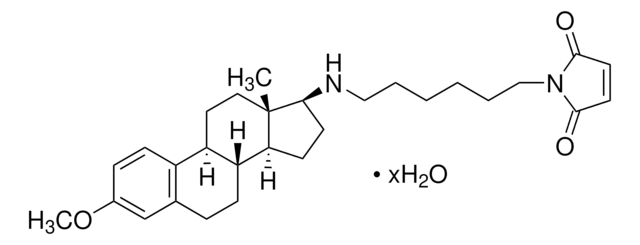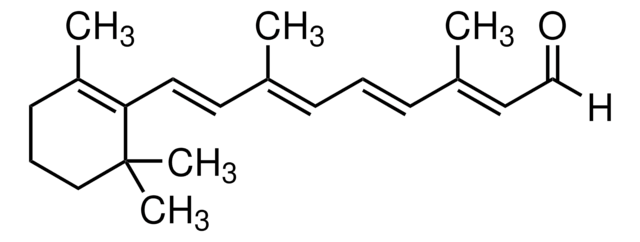U6881
U-73343
Sinónimos:
1-[6-[((17β)-3-Methoxyestra-1,3,5[10]-trien-17-yl)amino]hexyl]-2,5-pyrrolidinedione
About This Item
Productos recomendados
assay
≥98% (HPLC)
Quality Level
form
powder
color
white
solubility
DMSO: soluble
SMILES string
[H][C@]12CC[C@]3(C)[C@H](CC[C@@]3([H])[C@]1([H])CCc4cc(OC)ccc24)NCCCCCCN5C(=O)CCC5=O
InChI
1S/C29H42N2O3/c1-29-16-15-23-22-10-8-21(34-2)19-20(22)7-9-24(23)25(29)11-12-26(29)30-17-5-3-4-6-18-31-27(32)13-14-28(31)33/h8,10,19,23-26,30H,3-7,9,11-18H2,1-2H3/t23-,24-,25+,26+,29+/m1/s1
InChI key
CJHWFIUASFBCKN-ZRJUGLEFSA-N
¿Está buscando productos similares? Visita Guía de comparación de productos
General description
Application
Biochem/physiol Actions
Preparation Note
Storage Class
11 - Combustible Solids
wgk_germany
WGK 3
flash_point_f
Not applicable
flash_point_c
Not applicable
ppe
dust mask type N95 (US), Eyeshields, Gloves
Elija entre una de las versiones más recientes:
¿Ya tiene este producto?
Encuentre la documentación para los productos que ha comprado recientemente en la Biblioteca de documentos.
Nuestro equipo de científicos tiene experiencia en todas las áreas de investigación: Ciencias de la vida, Ciencia de los materiales, Síntesis química, Cromatografía, Analítica y muchas otras.
Póngase en contacto con el Servicio técnico






